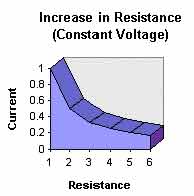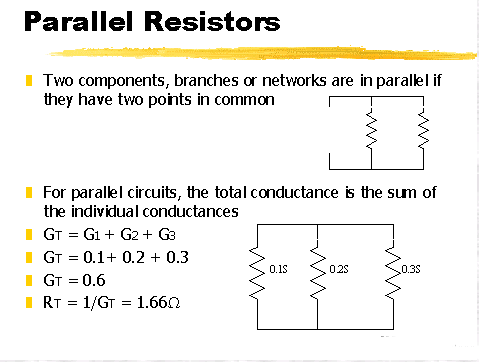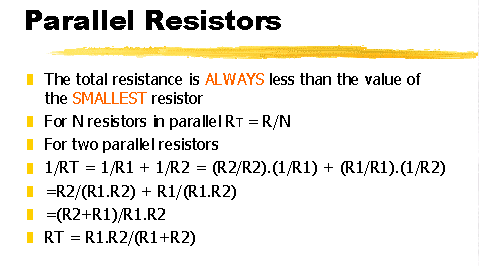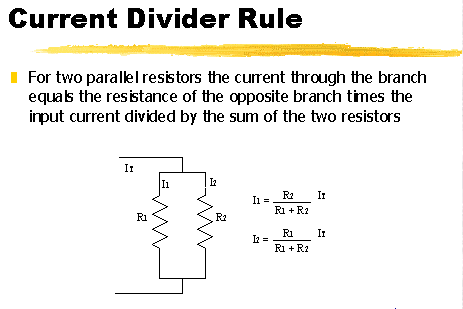Ohm’s Law
http://www.physics.uoguelph.ca/tutorials/ohm/Q.ohm.intro.html
http://webhome.idirect.com/~jadams/electronics/ohm.htm
http://www.the12volt.com/ohm/ohmslaw.asp
In simpler terms, Ohm’s Law means:
1) A steady
increase in voltage, in a circuit with constant resistance, produces a
constant linear rise in current. |
mmm |
2) A steady increase in resistance, in a circuit with constant voltage,
produces a progressively (not a straight-line if graphed) weaker current.
|
 |
Note :
Remember a battery is not measured in amperage as is commonly believed with
beginners to electronics. The battery supplies the pressure that creates the
flow (current) in a given circuit. The amperage rating on a battery is "How
long the battery will last for one hour while driving a circuit of that amperage".
It is measured in Amperage-Hours. So a 1000mAh would last for 1 hour in a one
amp circuit. (1000mAh is 1A for one hour)
fomula
: 찾아주는 곳
http://www.angelfire.com/pa/baconbacon/page2.html
http://webphysics.ph.msstate.edu/jc/library/18-2/ohmslaw.htm
Voltage Divider
This voltage divider produces
an output voltage, Vo, that is proportional to the input voltage, Vs. The output
voltage is measured using a voltmeter. The input voltage is the voltage of the
voltage source. The constant of proportionality is called the gain of the voltage
divider. The value of the gain of the voltage divider is determined by the resistances,
R1 and R2, of the two resistors that comprise the voltage divider.
http://hyperphysics.phy-astr.gsu.edu/hbase/electric/voldiv.html
http://www.clarkson.edu/~svoboda/eta/designLab/VoltageDividerDesign.html
(print)
http://www.aikenamps.com/VoltageDividerRule.htm
(print)
Voltage Divider Calculator
http://ourworld.compuserve.com/homepages/Bill_Bowden/r2.htm
http://www.raltron.com/cust/tools/voltage_divider.asp
Current Divider
http://www.ee.duke.edu/~cec/final/node37.html
http://www.mhhe.com/engcs/electrical/alexander/eetuts/tutorial/tut2A-1.htm
(print)
http://www.mhhe.com/engcs/electrical/alexander/eetuts/tutorial/tut2a-3.htm
(print)
http://www.clarkson.edu/~svoboda/eta/designLab/CurrentDividerDesign.html
(print)
http://floti.bell.ac.uk/principles/Parallel_circuits/sld002.htm













